Install Docker Engine and Docker Compose on Ubuntu Server
This article is for those looking for a detailed and straightforward guide on installing Docker Engine and Docker Compose on Ubuntu Server.
Docker is a container management system that allows you to “package” an application or website with all its environment and dependencies into a container that you can easily manage. For example, transfer to another server, scale, or update.
In this guide, we will consider the case when you already have a server with the Ubuntu Server 22.04 LTS operating system installed on it.
You can read more about how to install Ubuntu Server 22.04 LTS in my guide “Install Ubuntu Server 22.04 LTS”.
In addition, OpenSSH must be installed on the server, and port 22 must be open in order to be able to connect to the server using the SSH protocol.
To install OpenSSH on a server, you can use the command:
sudo apt install openssh-serverIf you plan to connect to the server using the Windows operating system, you can use PuTTY or MobaXterm.
This guide describes how to connect to a server using the iTerm2 terminal emulator installed on the macOS operating system.
We connect to the server on which you plan to install the Docker Engine.
Download the Docker Engine and Docker Compose installation script using the command:
curl -fsSL https://get.docker.com -o get-docker.sh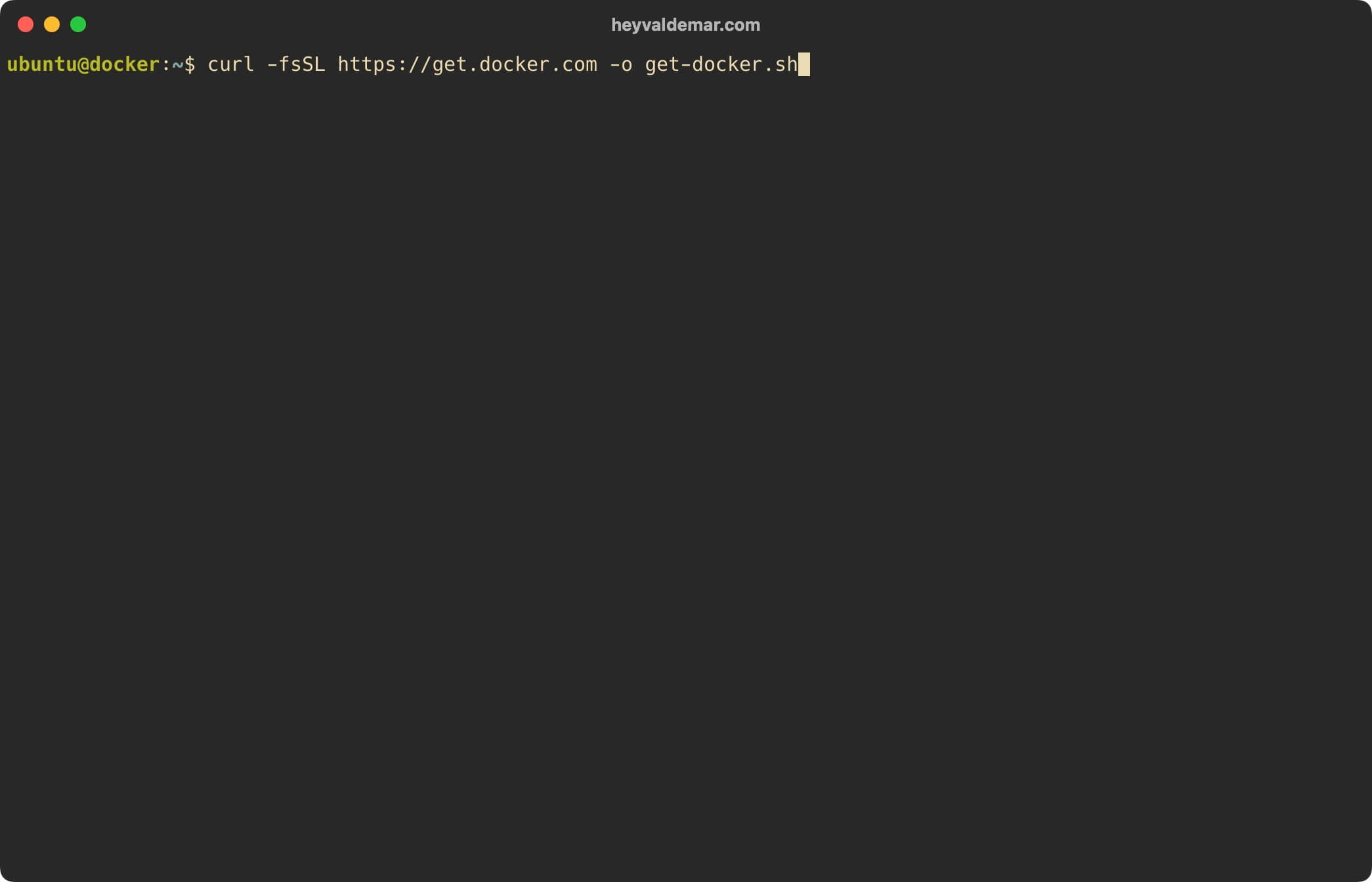
Now let’s start the Docker Engine and Docker Compose installation using the command:
sh get-docker.sh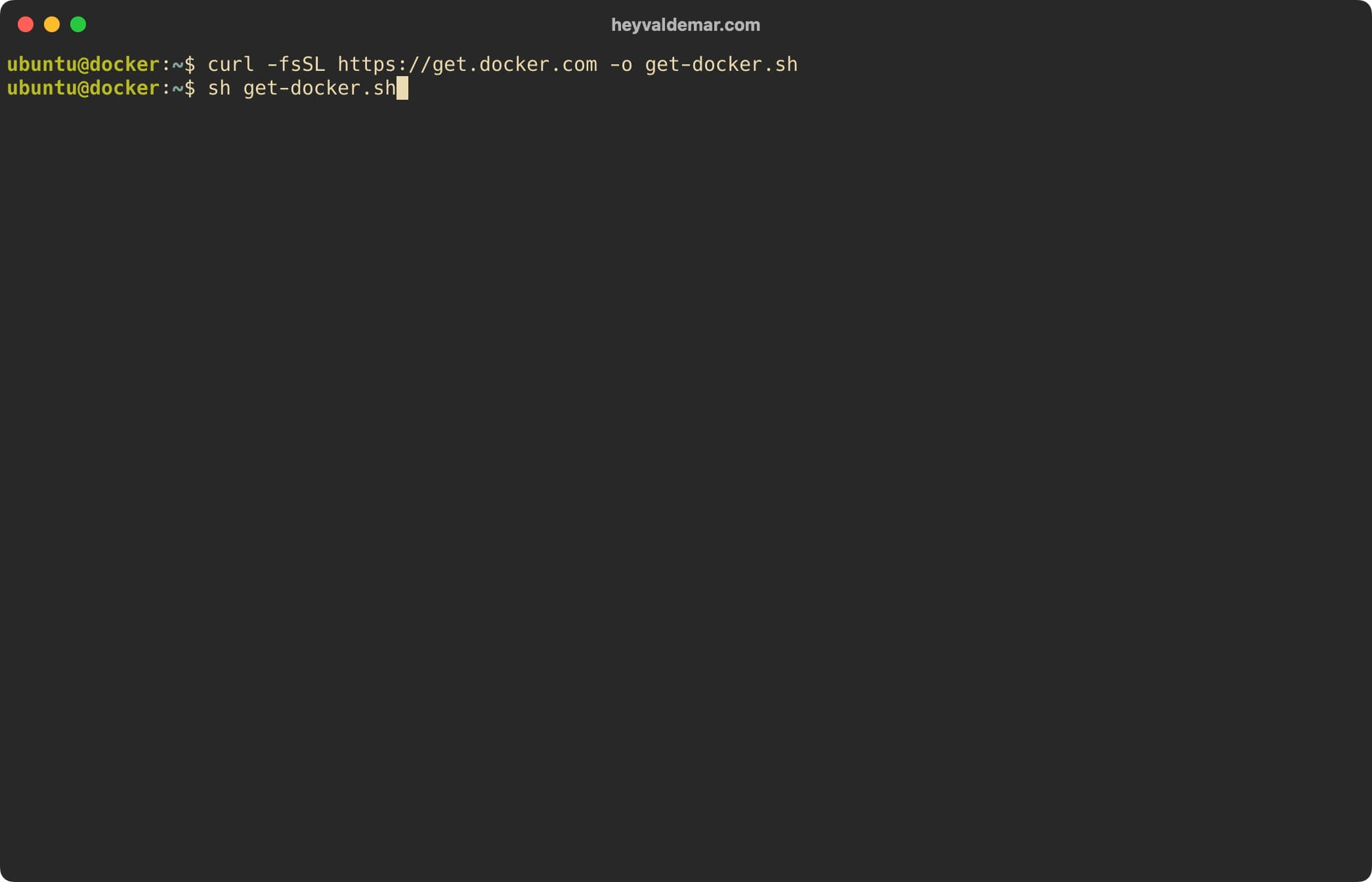
Now you need to make sure the Docker Engine is installed correctly. To do this, you need to run the command:
docker version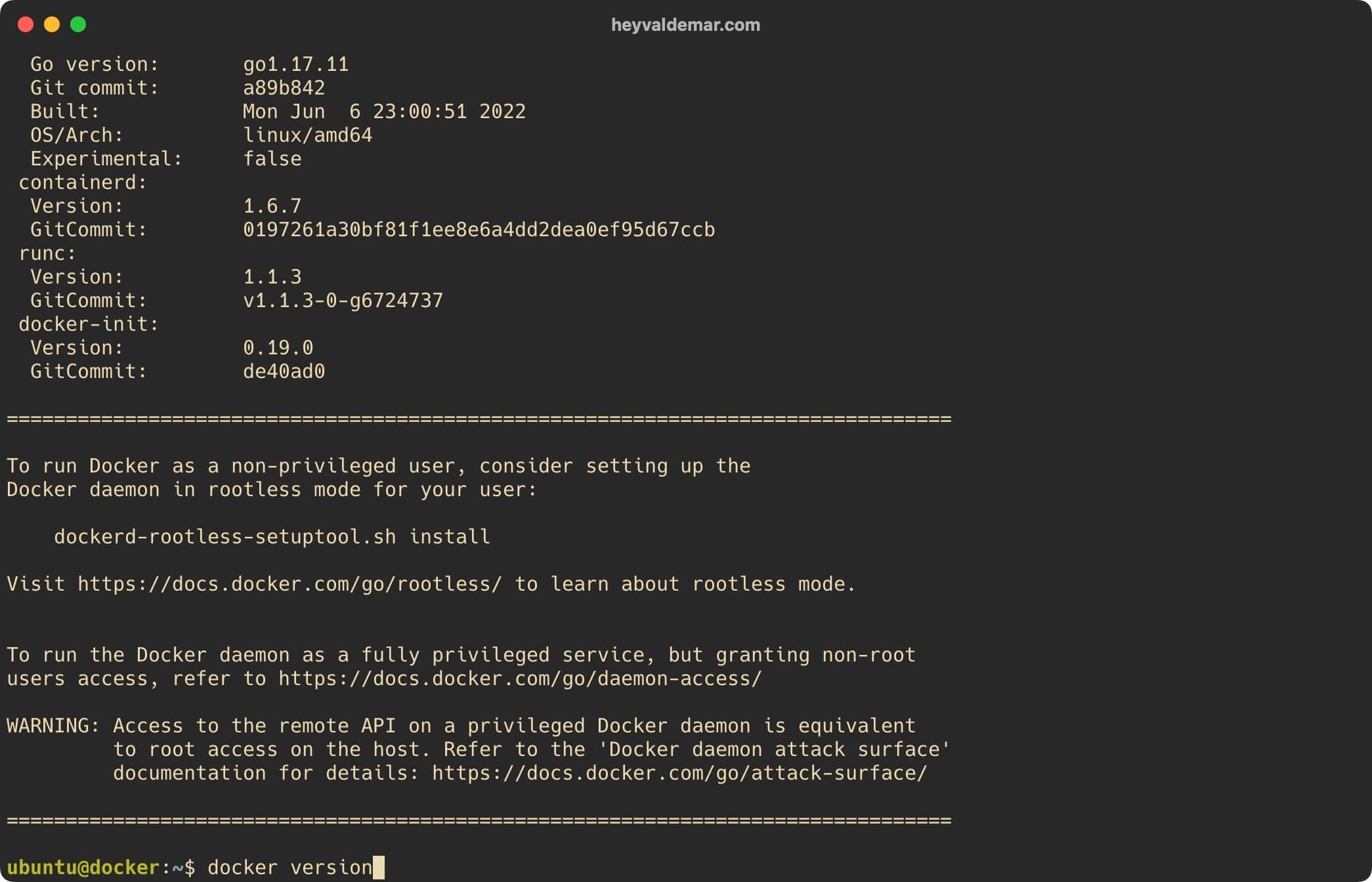
Next, you need to make sure the Docker Compose is installed correctly. To do this, you need to run the command:
docker compose version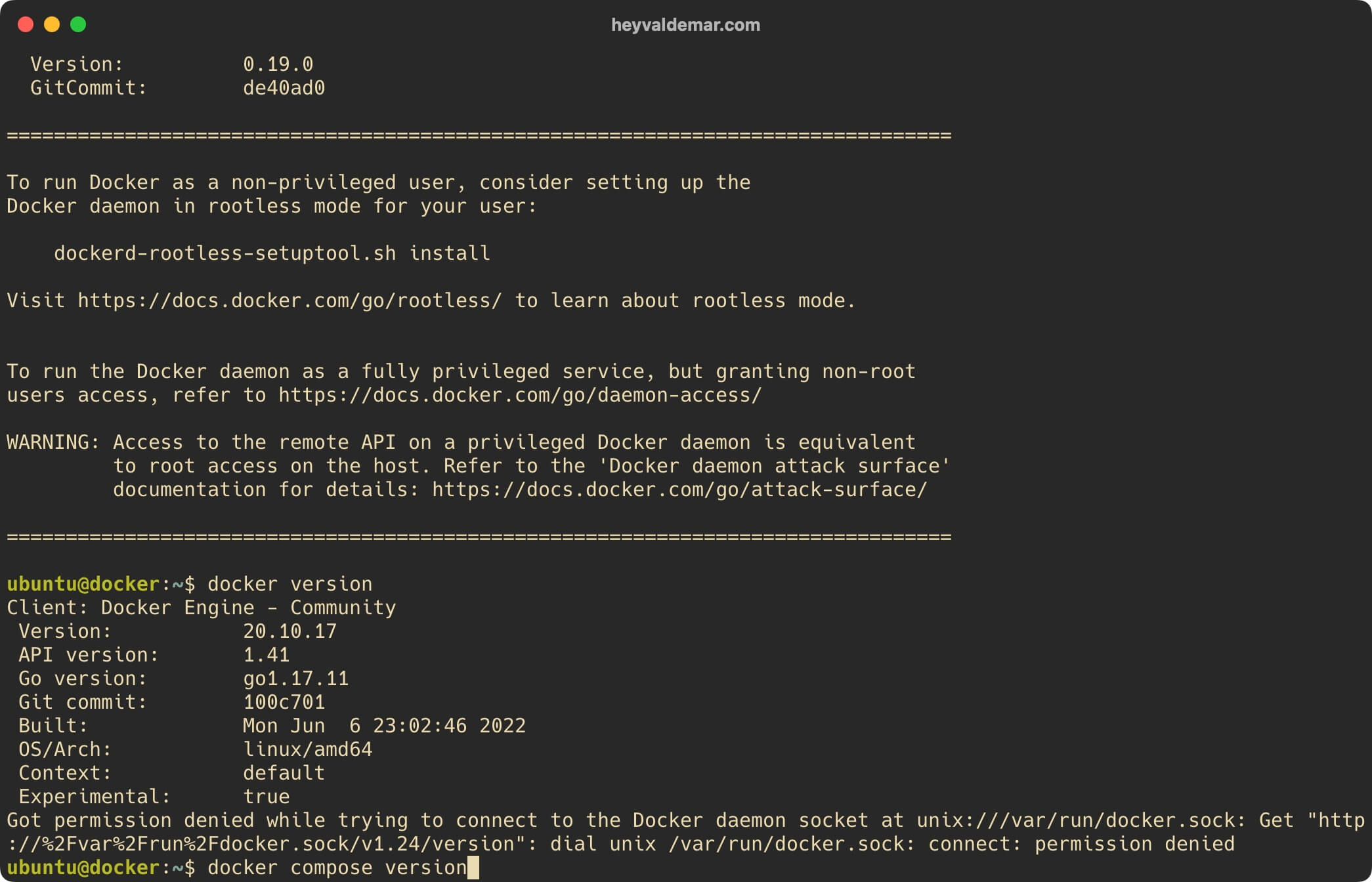
Based on the received messages, the Docker Engine and Docker Compose are installed correctly.
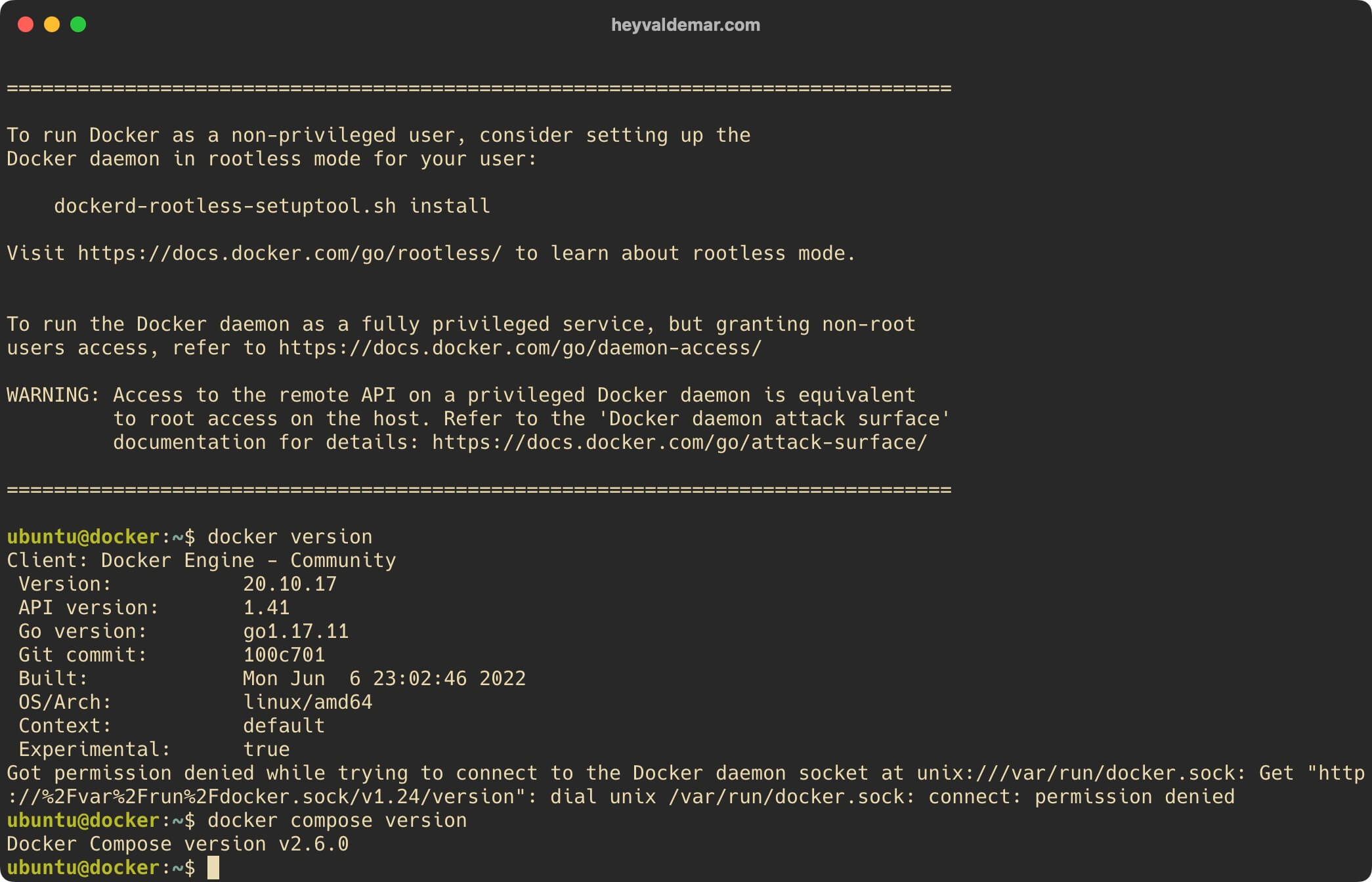
Next, you can add a user to the “docker” group to run the Docker Engine without having to use “sudo”.
Add the user “ubuntu” to the “docker” group using the command:
sudo usermod -aG docker $USER
To apply changes you need to log out and log back in again, which will cause your new session to have the proper group.
My Courses
🎓 Dive into my comprehensive IT courses designed for enthusiasts and professionals alike. Whether you’re looking to master Docker, conquer Kubernetes, or advance your DevOps skills, my courses provide a structured pathway to enhancing your technical prowess.
My Services
💼 Take a look at my service catalog and find out how we can make your technological life better. Whether it’s increasing the efficiency of your IT infrastructure, advancing your career, or expanding your technological horizons — I’m here to help you achieve your goals. From DevOps transformations to building gaming computers — let’s make your technology unparalleled!
Refill My Coffee Supplies
💖 PayPal
🏆 Patreon
💎 GitHub
🥤 BuyMeaCoffee
🍪 Ko-fi
Follow Me
🎬 YouTube
🐦 Twitter
🎨 Instagram
🐘 Mastodon
🧵 Threads
🎸 Facebook
🧊 Bluesky
🎥 TikTok
🐈 GitHub
Is this content AI-generated?
Nope! Each article is crafted by me, fueled by a deep passion for Docker and decades of IT expertise. While I employ AI to refine the grammar—ensuring the technical details are conveyed clearly—the insights, strategies, and guidance are purely my own. This approach may occasionally activate AI detectors, but you can be certain that the underlying knowledge and experiences are authentically mine.
